Devil You Know the God I Deserve
What does the devil look like? eight historical images of Satan
From a fallen angel to a disguised, red-hued human being with horns, images of Satan accept seen the Prince of Darkness' appearance reinvented many times. The satanic effigy of today is the result of centuries of art, literature and theatre, all sculpting a personification of evil.
To detect out what the devil really looks like, All Nigh History mag spoke with Marina Montesano, professor of Medieval History at the Academy of Messina in Italy, and Jan Machielsen, senior lecturer in Early Modern History at Cardiff University in the Great britain. Both of these scholars are experts in the history of Satan and the occult.
Hither are eight ways that people have pictured Satan through history.
Related: Where did Satan come from?
1. Ancient Hebrew: The serpent
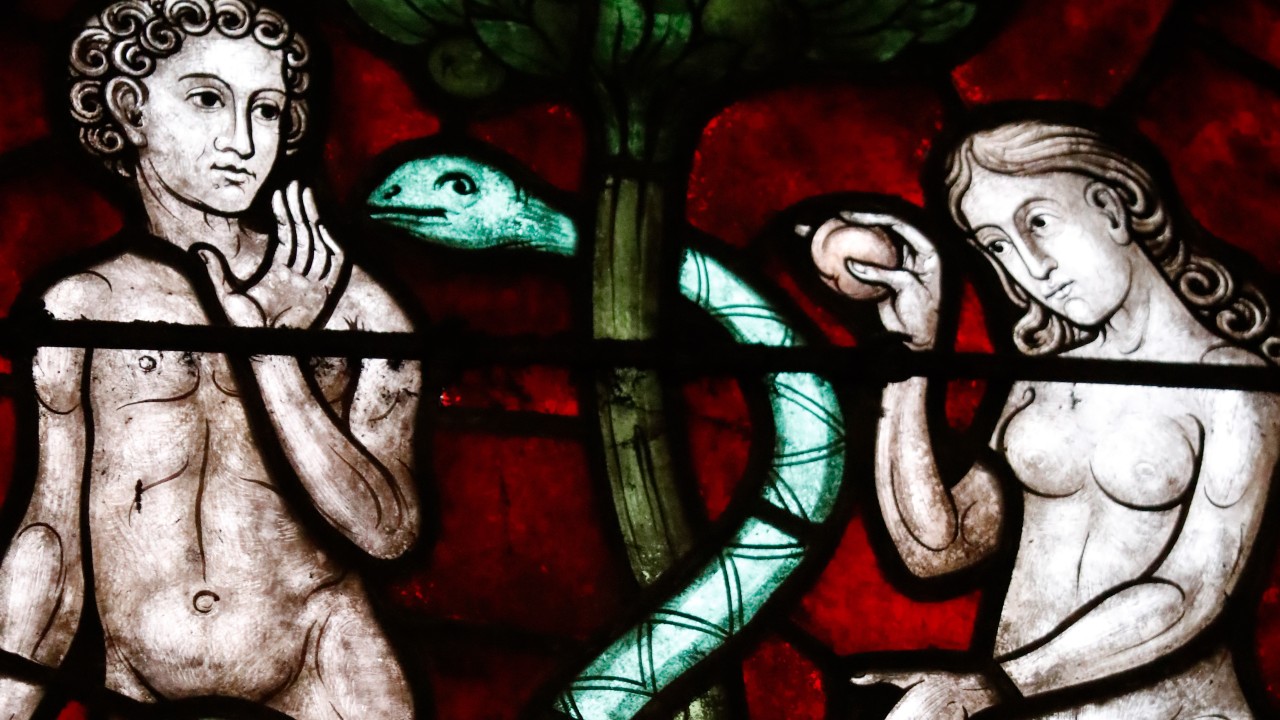
In the Old Testament's Volume of Genesis, the serpent who tempted Adam and Eve with the forbidden fruit in Eden, is ordinarily associated with Satan. In the original Hebrew text, though, no such name is given to the creature who convinces them to eat the fruit from the Tree of Knowledge of Good and Evil. According to Marina Montesano, the only references to "Satàn" in the Hebrew Bible mean "antagonist," "obstacle" or "enemy" and can refer either to human antagonists or supernatural entities. It is only later, in the New Testament, that Satan is referred to explicitly as a serpent. Despite this, serpents and snakes remain commonly associated with the devil.
two. Early medieval: The fallen affections
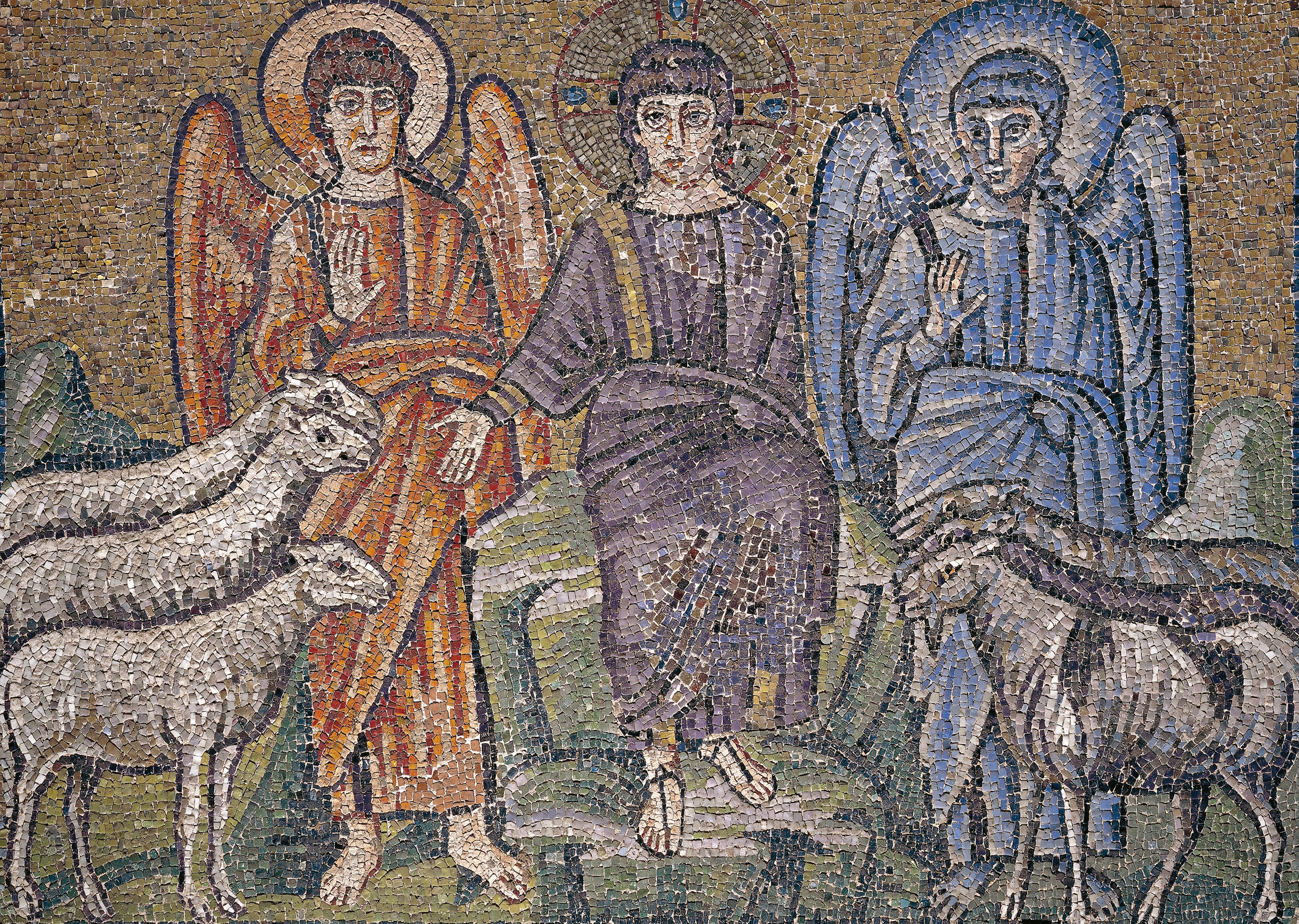
In the Bible, the Book of Isaiah 14:12 reads: "How fine art thou fallen from heaven, O Lucifer, son of the morning! How art m cut downward to the footing, which didst weaken the nations." This is a direct reference to God casting out Satan from heaven. "Match, the 'morning star' is the expression with which Isaiah defines a hereafter king of Babylon," Montesano said. "The fathers of the early medieval church building, however, elaborated the figure of Lucifer far across the biblical text, making him the rebel affections and transforming him into the paradigm of pride as the upper-case letter sin."
The earliest known suggested depiction of Satan is in a 6th-century mosaic, in the Basilica of Sant'Apollinare Nuovo, Ravenna, Italy. The image "shows the devil as an ethereal blue affections, [just this was] ultimately shed in favor of a more demonic advent with animalistic traits," Montesano said.
three. Late medieval: Satan equally the beast

Depictions of the devil during the Medieval period were unremarkably dragon-like, Montesano said. For example, an early on pope known as Saint Sylvester reportedly slayed a devilish dragon, impressing a group of pagan priests and confirming the Christian faith of the Roman emperor Constantine, as Hans A. Pohlsander, a professor of classics, explained in "The Emperor Constantine" (Routledge, 2004).
Related: Devil's Night: The history of pre-halloween pranks
However, while mythical creatures were ofttimes associated with the devil during the medieval menstruum, so besides were existent animals. According to the British Library, many medieval portrayals of the devil have animalistic features, including the iconic cloven hooves, tails, talons and even webbed hands.
Illustrations from a 14th-century French manuscript called the Smithfield Decretals show the devil with animal torso parts, and draw him as a humongous beast. "We find [depictions of] foxes, bears, lions and many others having connotations that tin can signify those attributed to the devil," Montesano said.
four. Dante'due south Inferno: The winged devil
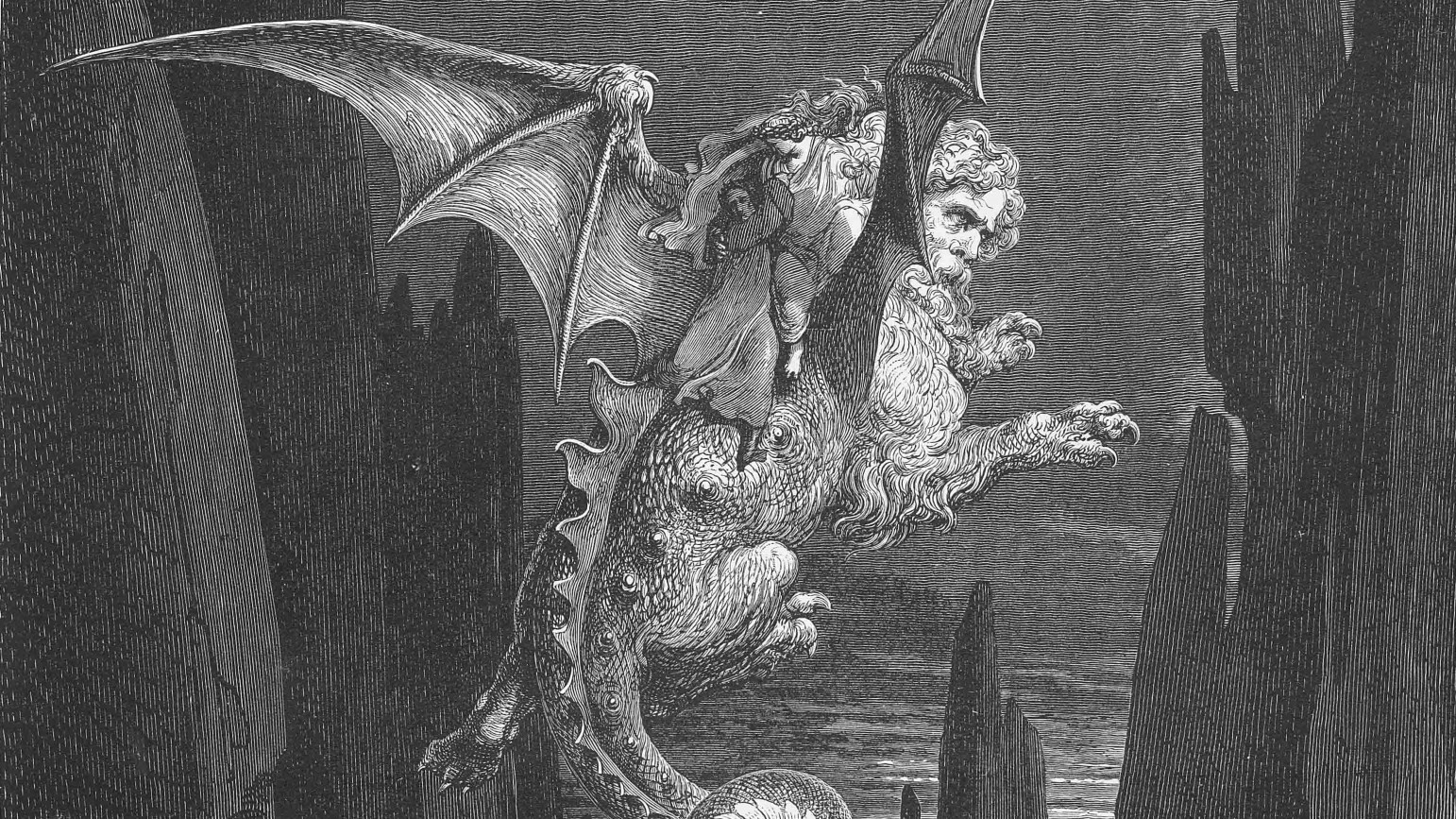
The 14th-century verse form "Inferno," written by Dante Alighieri as part of his "Divine Comedy", recounts a fictional journeying through the seven circles that make up hell before the protagonist comes face to face with Satan himself. Dante describes Satan with "two mighty wings, such as conforming were so groovy a bird; sails of the sea I never saw then large. No feathers had they, just every bit of a bat." (Canto 34: 49-51).
According to Montesano, Satan's wings may originate in Babylonian mythology, due to the devil's association with the figure of Lilith. "Lilith comes from the ancient Babylonian Lilitu demons: Winged females who flew through the dark, seducing men and attacking pregnant women and infants," she said.
Dante also introduces elements from Greco-Roman mythology into his traditional Christian lore. He refers to the devil as "Dis" and to a "Metropolis of Dis", which comes from Dis Pater, the Roman god of the underworld co-ordinate to "The Dante Encyclopedia" (Routledge, 2000) past Richard Lansing, professor of Italian studies and comparative literature at Brandeis Academy. In "Inferno" Dante writes: "Hence in the smallest circle, where the point is Of the Universe, upon which Dis is seated, Whoe'er betrays for ever is consumed." (Canto 11:64-65).
5. Satan with horns
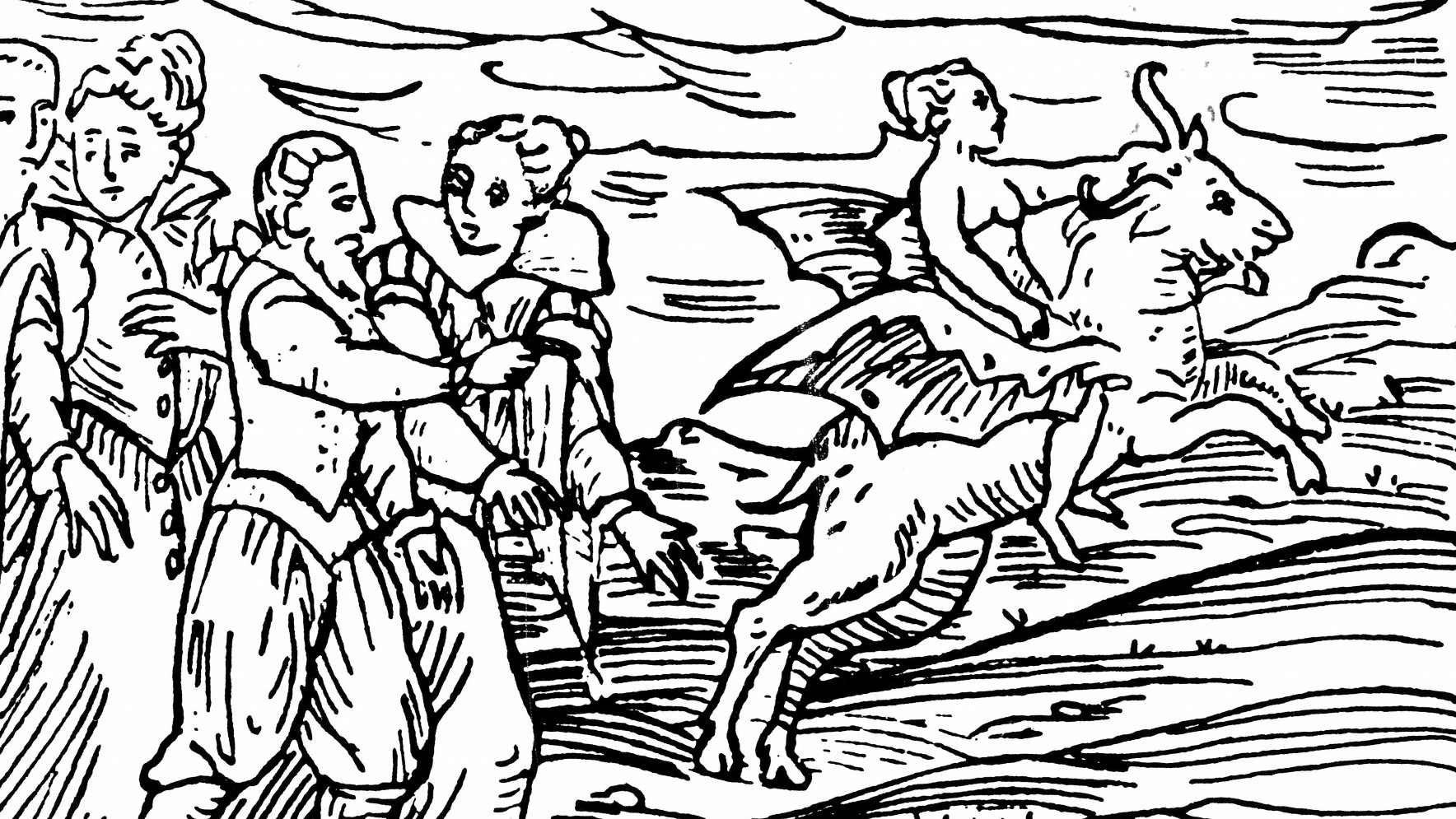
A clear early on link betwixt Satan and goats is found in the Basilica of Sant'Apollinare Nuovo mosaic, constructed in the late 6th century in Italy. In the mosaic, the blue angel to Jesus' left stands backside three goats, while the angel to Jesus' right is joined by three sheep.
The artwork represents a parable in Matthew 25:31-46: "When the Son of Man comes in his celebrity, and all the angels with him, he volition sit on his glorious throne. All the nations volition be gathered before him, and he will split the people i from another every bit a shepherd separates the sheep from the goats." In the story, the goat is associated with those not inbound sky. Some art historians, like Alastair Sooke of the BBC, claim that this is where the devil and his minions got their horns.
Related: No sympathy for the devil: Why people fear Satanism
Other experts disagree. "The caprine animal, which until the Centre Ages was barely linked to demonology, assumed a new function [around this time]." Montesano said. "According to some scholars, this new role comes mainly from its association with Nordic myths. Others say it might derive from the infidel god Pan, while British historian Ronald Hutton thinks it has more than to do with neo-pagan revival of mod — non Medieval — times."
In his book, "The Devil: Perceptions of Evil from Artifact to Archaic Christianity" (Cornell University Printing, 1987), Jeffrey Burton Russell claims the link between Satan and the goat derives from the devil's association with underworld fertility deities, who Christians rejected equally demons. Forth with other heathen gods, these horned idols were particularly feared "because of their association with the wilderness and with sexual frenzy."
6. Paradise Lost: The devil as an Adonis

Many mod audiences are used to seeing Satan as a chiseled, handsome homo, such equally in the 2016 Netflix serial "Lucifer". This incarnation of the devil first appeared in the 17th century. In 1667, John Milton published his epic verse form "Paradise Lost," which tells the story of Satan's expulsion from heaven and his temptation of Adam and Eve in the Garden of Eden. According to Nancy Rosenfield's book "The Human Satan in Seventeenth-Century Literature" (Ashgate Publishing, Ltd., 2013), Milton shows Satan as "a heroic military leader," who is "the most attractive of the satanic characters of 17th century literature."
In the 18th and early 19th century, there was a revival of involvement in "Paradise Lost." Artist William Blake found Milton'southward graphic symbol of Satan and then compelling that he produced several illustrations to accompany a version of "Paradise Lost" in which a nude Satan is shown as a handsome, god-like figure, with entirely human being features.
7. A devil dressed in red
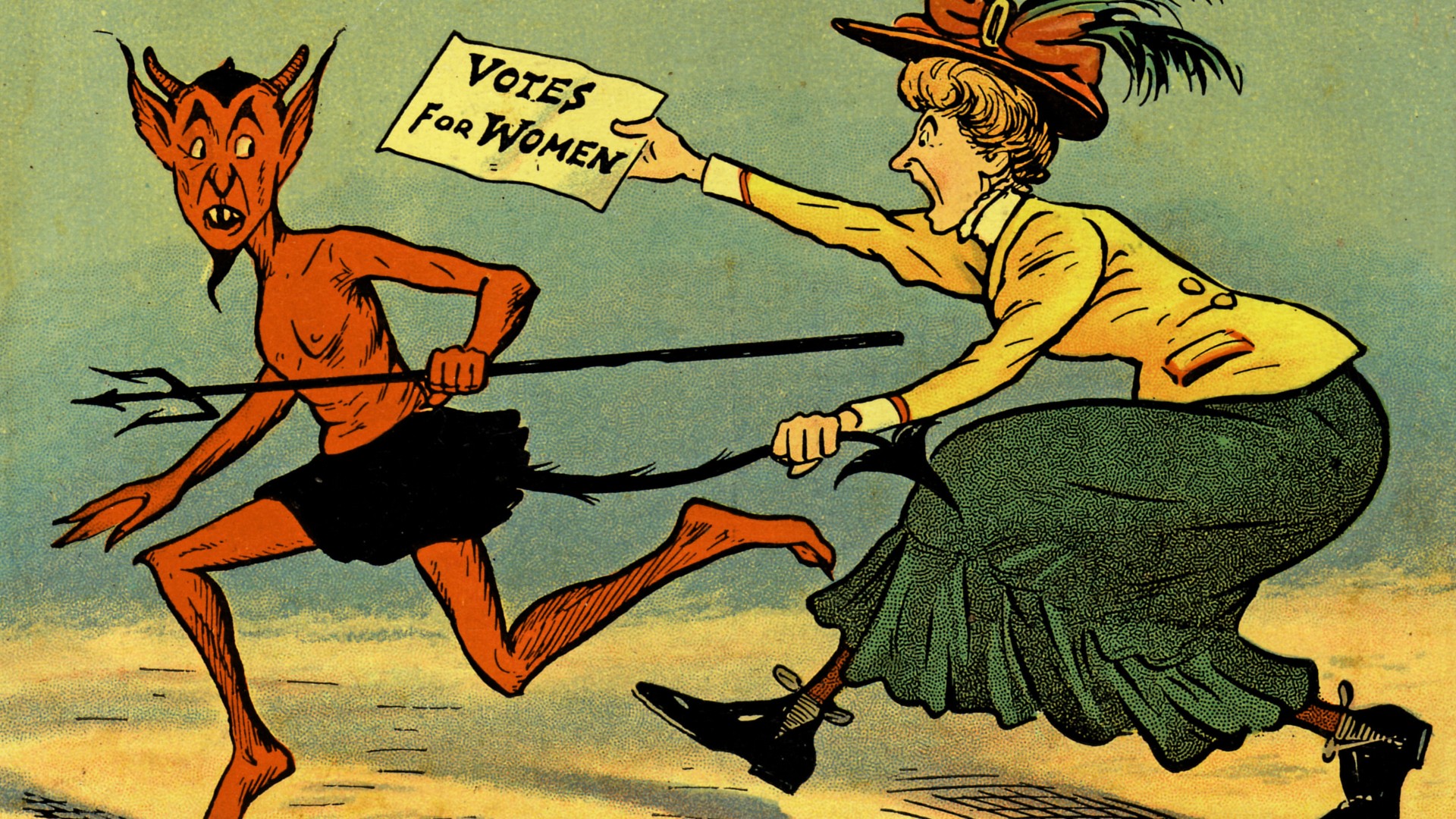
During the 19th and early 20th century the image of the devil was used in advertisements and satirical cartoons. In one 1900 cartoon, he is being chased abroad by a women's suffrage campaigner. Forth with his horns, he is also entirely red, with a pointed beard, and carrying a pitchfork.
Related: 20 of the almost bizarre stories from the bible
The devil's ruddy tights really originate in theatre productions. In 1859, composer Charles Gounod adopted the folktale "Faust," which had also inspired Marlowe's before play, "Dr. Faustus," into an opera, in which the devilish grapheme of Mephistopheles wears a Renaissance-era costume, including reddish tights, besides known equally hose.
In his book "A History of Opera: Milestones and Metamorphoses" (Opera Journeys Publishing, 2003), Burton Fisher wrote: "Marcel Journet sang Faust's Mephistopheles over a grand times, providing the stereotyped image of opera characters as devils in red tights." Different interpretations of this theatrical clothing have endured and remain popular Halloween costumes today.
8. The 20th century devil
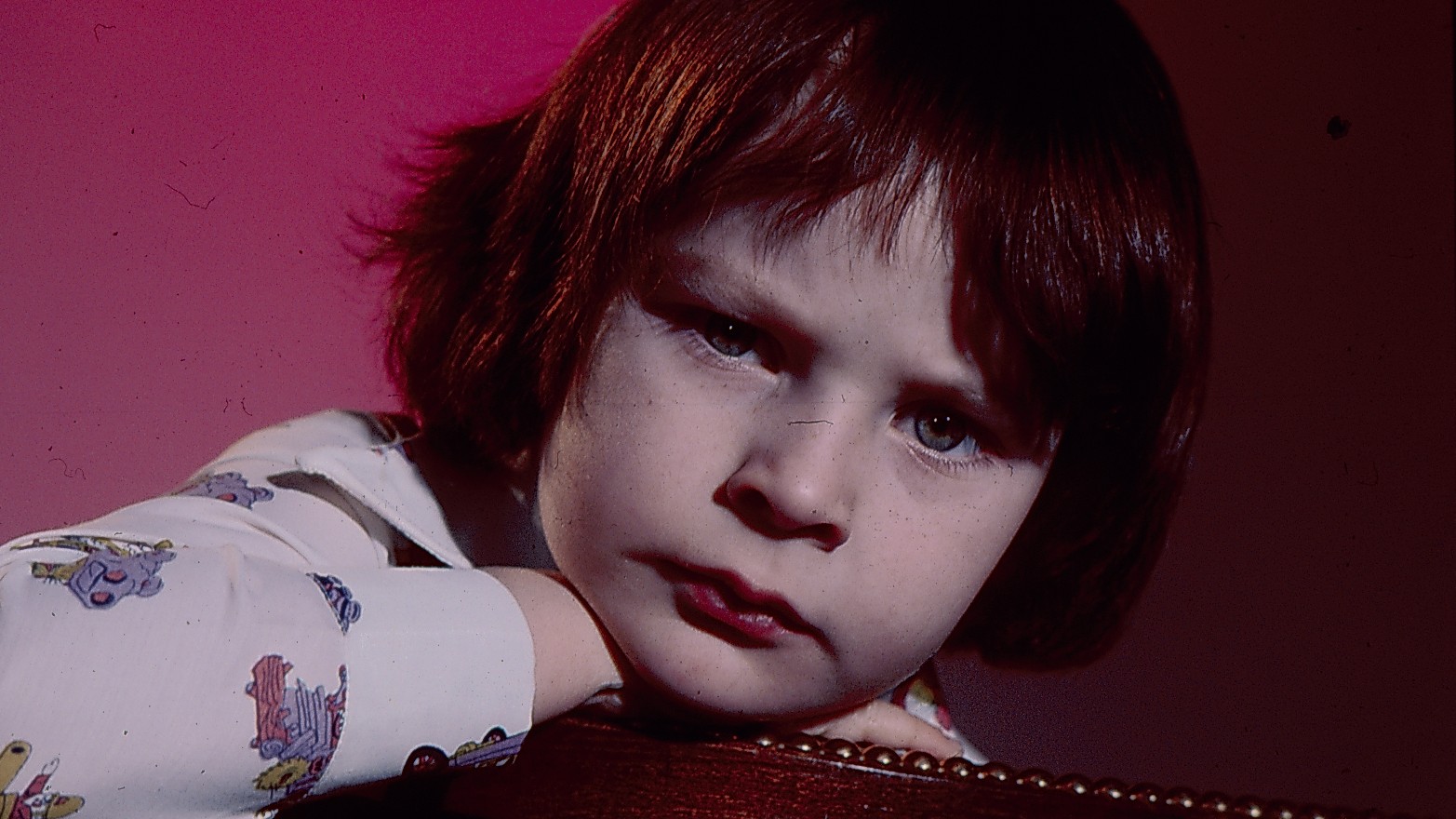
During the 20th century, the devil continued to be re-invented by writers and filmmakers, placing him in the guise of mysterious strangers, smart businessmen and fifty-fifty children, as in the 1976 horror movie "The Omen".
In Mikhail Bulgakov's novel "The Master and Margarita" (starting time published in Moskva mag, 1966), the devil appears as a smart but secretive stranger, who is accompanied past a talking cat. Similarly, in the 1987 film "Angel Heart" Robert de Niro plays Louis Cyphre (Match), a well-dressed just cryptic businessman.
In 1936, the American writer Stephen Vincent Benet wrote "The Devil and Daniel Webster" in which the character Mr. Scratch (Satan) fights for his right to a human being'south soul in a courtroom of police. In a similar vein, the 1997 film "Devil'due south Advocate" sees Al Pacino play Lucifer as the head of a shady New York City constabulary house.
But fifty-fifty these modern depictions of Lucifer as a lawyer have their origins in the Middle Ages. In an article from the periodical la Revue de fifty'histoire des religions, Karl Shoemaker, a historian at the Academy of Wisconsin, Madison, described a medieval court drama in which "the devil and his hellish council selected a demon learned in the law and sent him to the court of heaven in order to sue for a legal title to the human race."
This article was adapted from a previous version published in All Well-nigh History magazine, a Future Ltd. publication. To learn more about some of history's most incredible stories, subscribe to All About History magazine.
Source: https://www.livescience.com/what-does-the-devil-look-like.html
0 Response to "Devil You Know the God I Deserve"
Enregistrer un commentaire